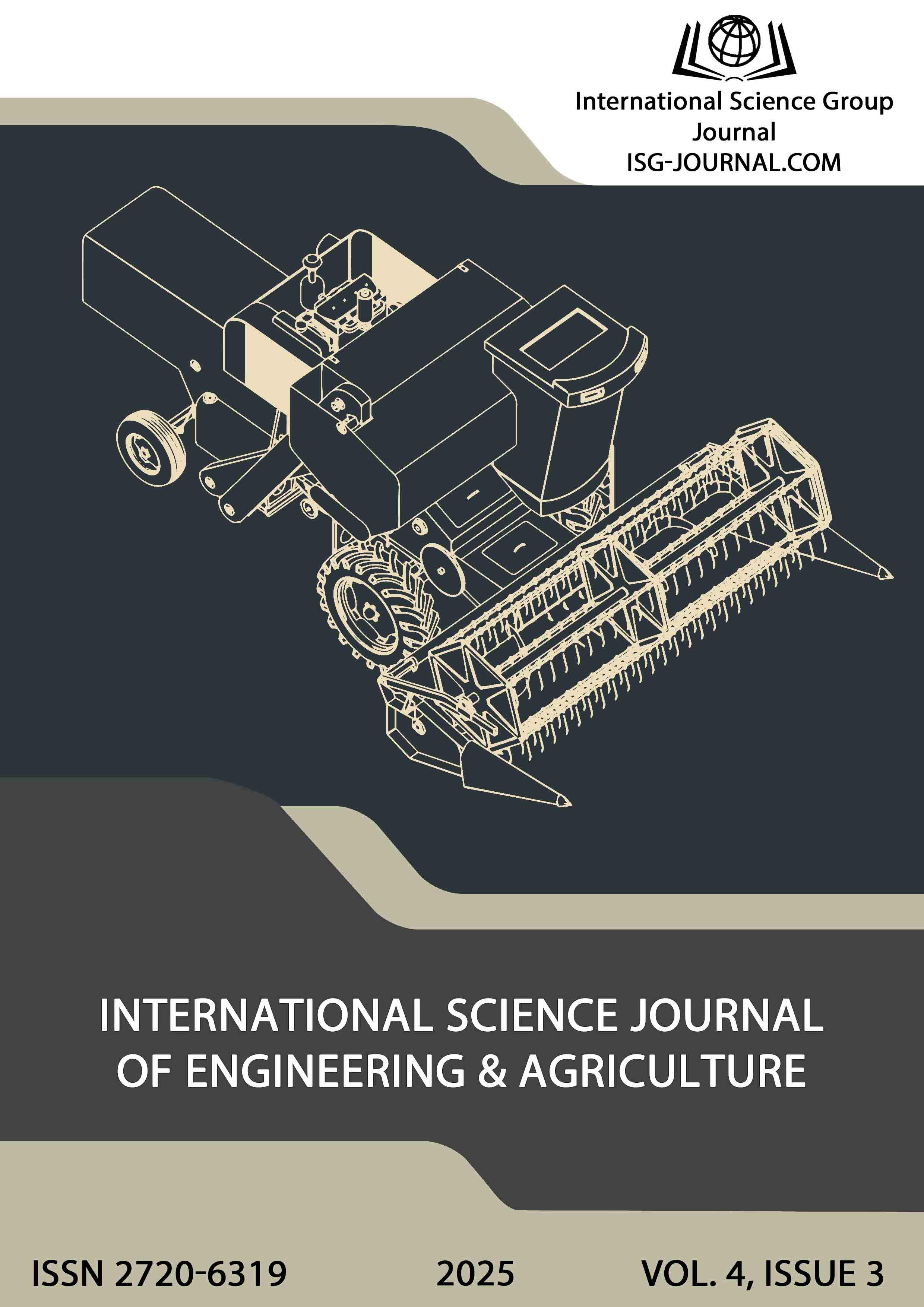Integrated FEM and neural network-based optimization of the drawing process for variable cross-section forgings
DOI:
https://doi.org/10.46299/j.isjea.20250403.09Keywords:
Variable cross-section forgings, Drawing process, Neural network, High-precision predictive model, Higher efficiencyAbstract
This study built a quality prediction model for the drawing process by integrating finite element simulation and neural network technology. It meticulously examines the influence of pivotal process parameters, including temperature, friction, speed, anvil width ratio (b/h), width-height ratio (w/h), and reduction ratio (ξ), on the overall drawing process. To facilitate a precise characterization of the workpiece's shape post-drawing, four key parameters - fullerring coefficient (F), barrelling degree (B), elongation ratio (E), and spread ratio (S) are introduced.The findings reveal that while friction and speed exert minimal influence on the drawing process, factors such as temperature, b/h, w/h, and especially the ξ, hold significant sway. Notably, a single-step reduction of 40% emerges as an optimal choice, with caution advised when exceeding a 50% reduction due to the potential implications on the internal stress state of the workpiece. A neural network framework is employed to analyze collected training data, establishing a high-precision predictive model with a post-training correlation coefficient of 0.973. Model robustness is validated through rigorous testing across three independent datasets. Building on deformation mechanisms of single-step drawing processes, we propose a customized process scheme for variable cross-section forgings. Optimized parameters—temperature (900°C), pressing speed (5 mm/s), friction factor (0.3), ξ=40%, and w/h=1.2—achieve higher efficiency with critical metrics demonstrating exceptional performance: maximum forming force (F=2.84) and minimal barreling distortion (B=5.85%). A single-pass strategy is recommended for production simplification, contingent upon maintaining anvil width exceeding workpiece elongation. These findings provide a robust technical foundation for enhancing production quality and efficiency in variable cross-section forging.References
Shutt, A. (1960). A note on spread in indenting. Applied Scientific Research, 9(1), 389.
Hill, R. O. D. N. E. Y. (1963). A general method of analysis for metal-working processes. Journal of the Mechanics and Physics of Solids, 11(5), 305-326.
Baraya, G. L. (1964). Flat Bar Forging and the Yield Criteria. The University of Manchester (United Kingdom).
Pahnke, H. J. (1983). Fundamentals of programmed forging. Metall. Plant Technol., 6(5), 92-101.
Tomlinson, A., & Stringer, J. D. (1959). Spread and elongation in flat tool forging. J. Iron Steel Inst, 193(2), 157-162.
Aksakal, B., Osman, F. H., & Bramley, A. N. (1997). Upper-bound analysis for the automation of open-die forging. Journal of materials processing technology, 71(2), 215-223.
Kudo, H. (1960). An upper-bound approach to plane-strain forging and extrusion—I. International Journal of Mechanical Sciences, 1(1), 57-83.
Baraya, G. L. , & Johnson, W. . (1964). Flat bar forging.
Sagar, R., & Juneja, B. L. (1979). An upper bound solution for flat tool forging taking into account the bulging of sides. International Journal of Machine Tool Design and Research, 19(4), 253-258.
Braun-Angott, P., & Berger, B. (1982). An upper bound approximation for spread and pressure in flat tool forging. Numerical Methods in Industrial Forming Processes, 165-174.
Kanacri, F., Lee, C. H., Beck, L. R., & Kobayashi, S. (1973). Plastic compression of rectangular blocks between two parallel platens. In Proceedings of the Thirteenth International Machine Tool Design and Research Conference (pp. 481-490). Macmillan Education UK.
Alexandrov, S., Lyamina, E., & Jeng, Y. R. (2023). Application of the upper bound theorem for metal forming processes considering an arbitrary isotropic pressure-independent yield criterion with no strength differential effect. The International Journal of Advanced Manufacturing Technology, 126(7), 3311-3321.
Mwema, F. M., & Obiko, J. (2021). Deformation behaviour of high-strength aluminium alloy during forging process using finite element method.
丁艳宝. (2011). 厚板类锻件拔长的成形规律及应用研究 (Master's thesis, 中南大学).
Lee, S., Quagliato, L., Park, D., Kwon, I., Sun, J., & Kim, N. (2021). A new approach to preform design in metal forging processes based on the convolution neural network. Applied Sciences, 11(17), 7948.
Ilic, S., Karaman, A., Pöppelbaum, J., Reimann, J. N., Marré, M., & Schwung, A. (2024). Predicting Wall Thickness Changes in Cold Forging Processes: An Integrated FEM and Neural Network approach. arXiv preprint arXiv:2411.13366.
Zhang, X., Borysevych, V., & Chen, J. (2022). Selection of the rational geometry of specimen for compression test.
Schmidhuber, J. (2015). Deep learning in neural networks: An overview. Neural networks, 61, 85-117.
Arjun, K. S., & Aneesh, K. (2015). Modelling studies by application of artificial neural network using matlab. Journal of Engineering Science and Technology, 10(10), 1477-1486.
Downloads
Published
How to Cite
Issue
Section
License
Copyright (c) 2025 Xiang Zhang, Volodymyr Borysevych

This work is licensed under a Creative Commons Attribution 4.0 International License.






